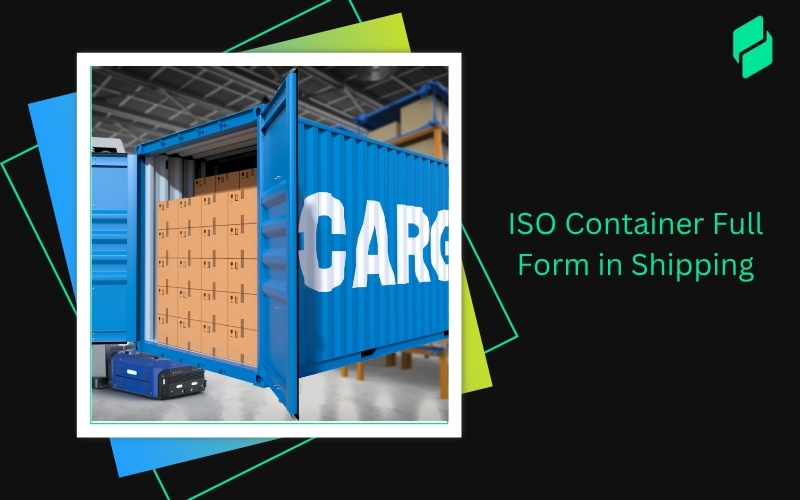Navigating the complex world of freight management, and understanding CFS in logistics is vital.
Serving as the backbone of efficient logistics operations, Container Freight Stations (CFS) significantly enhance cargo handling and storage. This guide unveils the critical role, purpose, and advantages of CFS within the logistics sector.
Whether you're well-versed in the field or new to logistics, comprehending the concept of CFS is essential for streamlining your supply chain and unlocking the potential for more cost-effective and efficient logistics solutions.
Optimize your business: use unlimited savings with Pazago fulfilled now!
Get Started ->Understanding Container Freight Station - CFS In Logistics
A Container Freight Station (CFS) is a critical component in the logistics and shipping industry, acting as a hub for the consolidation and deconsolidation of cargo. It is a facility where goods are stored, sorted, and prepared for import and export.
CFS is pivotal in facilitating efficient cargo movement, especially for less-than-container load (LCL) shipments. By aggregating small shipments into full container loads (FCL), CFS helps optimize space utilization and reduce shipping costs.
Roles of Container Freight Station in shipping operations
The primary role of a Container Freight Station is to streamline the shipping process. It serves as an intermediary point where cargo is collected, inspected, and repackaged for further transport. CFS facilities ensure that goods are securely stored and handled, minimizing the risk of damage during transit.
Additionally, they provide essential services such as customs clearance, documentation, and cargo tracking, which are vital for smooth import and export operations.
Operators of CFS In Logistics facilities: Who manages these spaces?
CFS facilities are typically operated by logistics companies, port authorities, or specialized CFS operators. These entities are responsible for maintaining the infrastructure, ensuring compliance with regulations, and providing efficient services to shippers and consignees.
The management of CFS facilities requires expertise in logistics, security, and customs procedures, making it crucial for operators to have a deep understanding of the shipping industry.
Key Functions and Processes at a CFS In Logistics

Curious about what goes on inside a CFS? Let's break down the key functions and processes.
1. Consolidation of Less than Container Load (LCL) Shipments
- Purpose: To combine multiple small shipments into a single container for efficient transport.
- Benefits: Optimizes container space and reduces shipping costs.
2. De-consolidation Process for Cargo Distribution
- Purpose: To separate the consolidated container into individual shipments for distribution.
- Benefits: Ensures accurate separation and preparation for final delivery, facilitating smooth cargo distribution.
3. Loading, Unloading, Sorting, and Stacking of Containers
- Purpose: To handle containers efficiently within the CFS facility.
- Benefits: Maximizes space utilization, ensures safe handling of goods and maintains order for quick access to shipments.
4. Customs Examination and Document Management
- Purpose: To conduct necessary customs inspections and process shipping documents.
- Benefits: Ensures compliance with import and export regulations and facilitates customs clearance for smooth international trade.
5. Providing Temporary Storage Solutions for Cargo
- Purpose: To offer short-term storage for shipments before further transport or distribution.
- Benefits: Ensures that cargo remains safe and well-maintained during transit.
Efficient cargo handling and minimizing risk are key to successful shipping operations. Ensure your goods are in safe hands with Pazago's logistics services, tailored for SME exporters and importers.
With the core processes behind us, let's delve into the multitude of benefits CFS offers to the logistics industry.
Benefits of Using CFS In Logistics
- Streamlines Import-Export Process: Centralizes cargo handling, documentation, and customs clearance, simplifying international shipping operations.
- Cost-Effective for LCL Shipments: Consolidates multiple small shipments into one container, reducing costs and providing an efficient solution for small businesses.
- Enhances Safety and Security: Implements stringent measures to minimize the risk of damage and theft, ensuring safe cargo delivery.
- Improves Tracking: Maintains detailed records of shipments, facilitating better tracking and management of cargo.
- Decongest Ports and Terminals: Handles cargo away from main ports, reducing delays and improving the efficiency of port operations.
- Offers Additional Services: Provides services like packing, sealing, and labeling, ensuring shipments are well-prepared and compliant with regulations.
Import and Export Processes Through CFS
The Container Freight Station (CFS) serves as a crucial intermediary in the logistics chain, facilitating both the import and export processes for Less Container Load (LCL) and Full Container Load (FCL) cargoes. Here's an overview of how these processes unfold at a CFS:
Export Process
- Arrival of Goods: The exporter delivers the goods to the CFS, accompanied by a shipping bill.
- Receival and Accounting: The goods are unloaded, and the CFS custodian accounts for their receipt.
- Customs Clearance: Customs authorities initiate the clearance procedures for the goods.
- Let Export Order: Once the clearance is completed, customs authorities issue a shipping bill with a "let export order."
- Loading: The CFS begins loading the goods into the container.
- Sealing and Dispatch: The container is sealed and marked. It is then dispatched to the port or terminal for export.
Import Process
- Filing IGM: Upon the container's arrival, the importer files an Import General Manifest (IGM) at the port, detailing the cargo, exporter, and importer.
- Forwarding to CFS: The container is then forwarded to the destination CFS.
- Offloading and Clearance: The CFS offloads the cargo and initiates the cargo clearance process.
- Bill of Entry: The cargo owner or their clearing agent files a bill of entry. Once the cargo clearance and duty payment are completed, it is forwarded to the customs authorities.
- Out of Charge Order: Customs issues a bill of entry with an "out of charge" order.
- Dispatch to Importer: The CFS custodian dispatches the cargo to the importer with a gate pass.
The procedure of customs clearance at CFS
- Submission of necessary documents by the importer/exporter.
- Inspection of cargo by customs officials.
- Calculation and payment of duties or taxes.
- Cargo is cleared for export or released for import.
Understanding the complexities of import and export through CFS can be daunting. Pazago simplifies these processes, offering insights and management tools that make international trade hassle-free for SMEs.
Container Freight Station (CFS In Logistics) Charges and Fees
Now that you're a bit more familiar with how CFS fits into the puzzle of global trade, let's talk money – specifically, the various charges and fees you might run into along the way.
1. Overview of Typical Charges Incurred at a CFS
- Handling Fees: For loading and unloading cargo.
- Storage Charges: Based on the duration and size of the cargo stored.
- Documentation Fees: For processing shipping documents.
- Customs Clearance Fees: For customs inspection and clearance.
- Trucking Fees: For transporting the container from the port to the CFS.
- Consolidation/Deconsolidation Fees: For combining or separating shipments.
- Palletizing Fees: If necessary, for securing cargo on pallets.
- Last-Mile Delivery Fees: In some cases, for delivering the shipment to its final destination.
2. How Fees are Calculated
- Weight-Based Fees: Charged per ton for heavy cargo.
- Volume-Based Fees: Charged per cubic meter for bulky cargo.
- Flat Rates: Some charges, like handling fees, may be fixed.
- Accurate Cargo Details: Essential for correct fee calculation.
3. Importance of Understanding CFS Charges for Cost-Effective Shipping
Understanding the structure of CFS charges is crucial for cost-effective shipping. By being aware of the various fees and how they are calculated, shippers can better plan their logistics and avoid unexpected costs.
It's also advisable to compare charges across different CFS facilities to find the most economical option for their shipping needs.
Choosing the Right Container Freight Station Provider

When choosing a CFS provider, consider factors such as location proximity to ports and major transportation routes, reputation for reliability and security, range of services offered, and competitive pricing. Additionally, evaluate their track record for timely and accurate cargo handling.
The Importance of Service Quality and Efficiency in Logistics
High service quality and efficiency are vital in logistics. A good CFS provider should ensure fast turnaround times, minimize delays, and provide transparent communication. This not only streamlines the shipping process but also reduces the risk of errors and additional costs.
Assessing the Capabilities of CFS in Handling Specialized Cargo Needs
If your cargo has specific requirements, such as temperature control or hazardous materials handling, it's crucial to choose a CFS with the appropriate facilities and expertise. Assess their experience in managing similar cargo and inquire about their safety and compliance measures.
Consider Pazago for exceptional service quality, efficiency in logistics, and a suite of other services that address your specialized cargo needs, all aimed at ensuring fast turnaround times and minimized delays.
FAQs on Container Freight Stations
What is the difference between a Container Freight Station (CFS) and a Container Yard (CY)?
A CFS is a facility where cargo is consolidated or unconsolidated, prepared for shipping, and temporarily stored. It handles both LCL and FCL shipments. In contrast, a CY is mainly a storage area for empty and full containers, primarily used for FCL shipments, and lacks the consolidation or deconsolidation services offered by a CFS.
What is the role of consolidation and de-consolidation in a CFS?
Consolidation at a CFS involves combining multiple LCL shipments into one container for efficient transportation. De-consolidation is the process of separating a container's contents into individual LCL shipments at the destination CFS for delivery to respective consignees. These processes optimize cargo space, reduce shipping costs, and streamline logistics.
What are Less than Container Load (LCL) shipments, and how are they handled in a CFS?
LCL shipments refer to cargo that does not fill an entire container and is combined with other shipments in a single container. LCL is suitable for small businesses or shippers with smaller cargo volumes, offering a cost-effective solution. CFS plays a crucial role in handling LCL shipments by consolidating and de-consolidating these smaller cargoes for efficient transport.
Still have questions regarding CFS and how it affects your business? Pazago offers detailed trade insights and logistics guidance, helping you answer these crucial queries and streamline your operations.
Conclusion
In conclusion, understanding the role and functions of a Container Freight Station (CFS) is crucial in the logistics and shipping industry.
From streamlining the import-export process to facilitating cost-effective shipping for LCL shipments, CFS plays a pivotal role in ensuring efficient cargo management.
The choice of the right CFS provider and a clear understanding of the fees involved are essential for optimizing logistics operations.
With the increasing complexity of global trade, the importance of CFS in logistics cannot be overstated, as it not only enhances operational efficiency but also contributes to the overall success of the supply chain.


.png)








